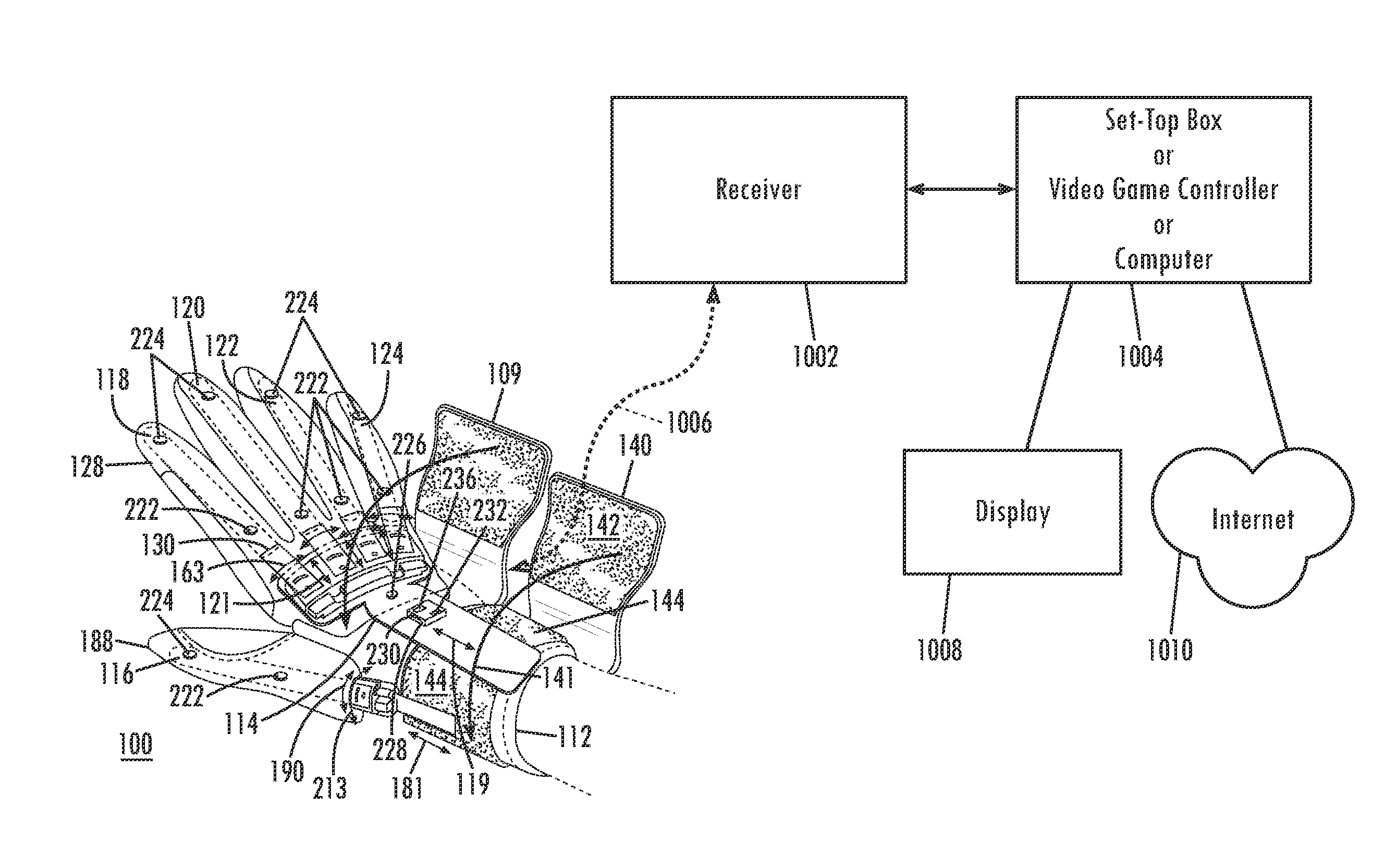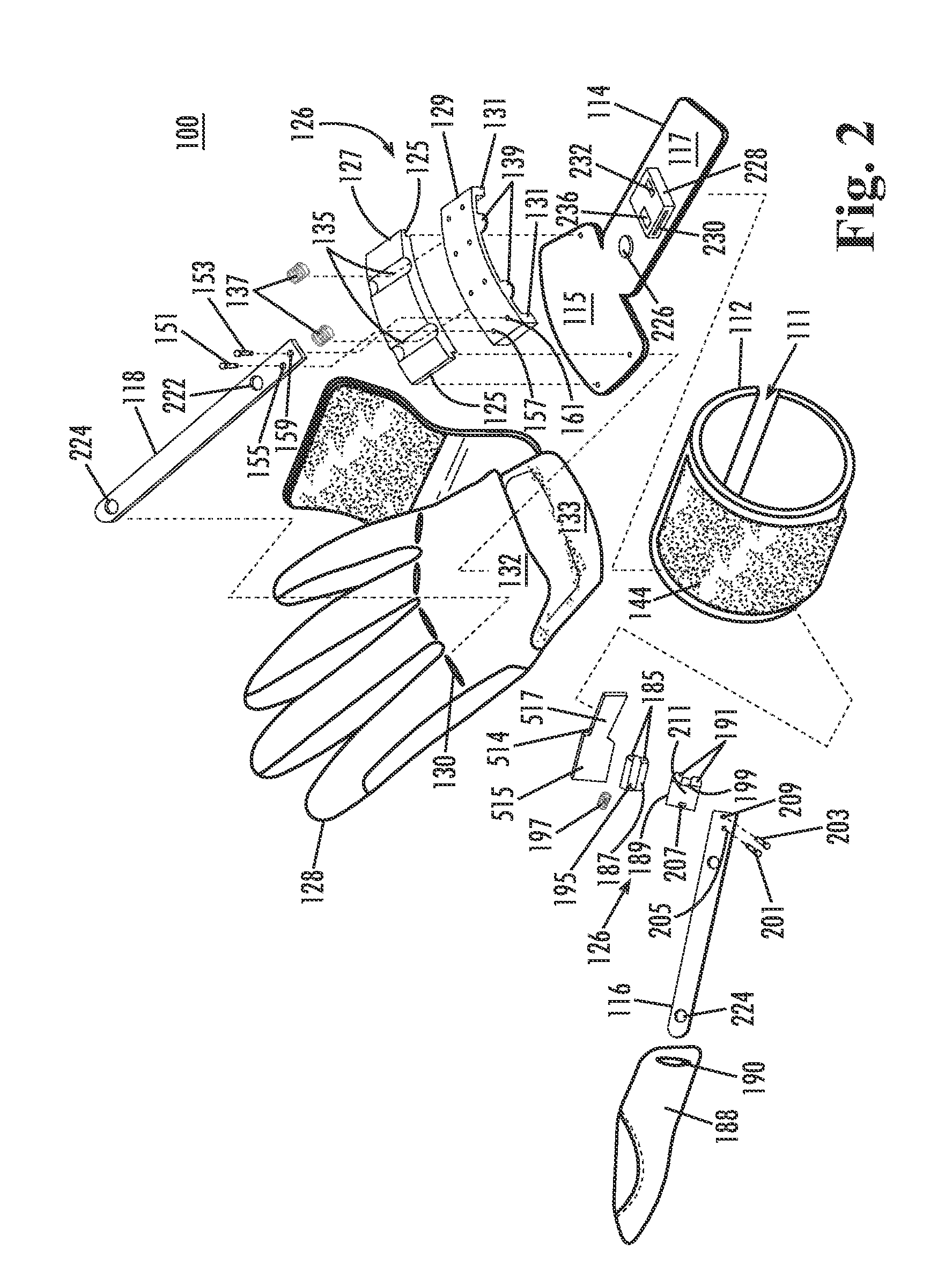Neurological device
a neurologic and neurological technology, applied in the field of neurologic rehabilitation devices, can solve the problems of not being able to extend their wrist or fingers to grasp objects, unable to use cuffs when practical, and no known prior art is neurological
- Summary
- Abstract
- Description
- Claims
- Application Information
AI Technical Summary
Benefits of technology
Problems solved by technology
Method used
Image
Examples
Embodiment Construction
[0035]One of ordinary skill in the art will understand that the present discussion is a description of exemplary embodiments only, and is not intended as limiting the broader aspects of the present invention, which broader aspects are embodied in the exemplary construction. A repeat use of reference characters in the present specification and drawings represents the same or analogous features or elements of the invention.
[0036]Referring to FIGS. 1 and 2, a neurological device 100 is shown having a forearm support section 112 and a hand support section 114 that are coupled together as described below. Forearm support section 112 is preferably formed from a flexible material such as plastic, metal, or alloy material. Forearm support section 112 also is configured and dimensioned to extend along a forearm of the user from the wrist rearwardly for a distance of at least several inches, and is generally tubular and designed to surround a portion of the wrist and forearm. Forearm support ...
PUM
 Login to View More
Login to View More Abstract
Description
Claims
Application Information
 Login to View More
Login to View More - R&D
- Intellectual Property
- Life Sciences
- Materials
- Tech Scout
- Unparalleled Data Quality
- Higher Quality Content
- 60% Fewer Hallucinations
Browse by: Latest US Patents, China's latest patents, Technical Efficacy Thesaurus, Application Domain, Technology Topic, Popular Technical Reports.
© 2025 PatSnap. All rights reserved.Legal|Privacy policy|Modern Slavery Act Transparency Statement|Sitemap|About US| Contact US: help@patsnap.com



